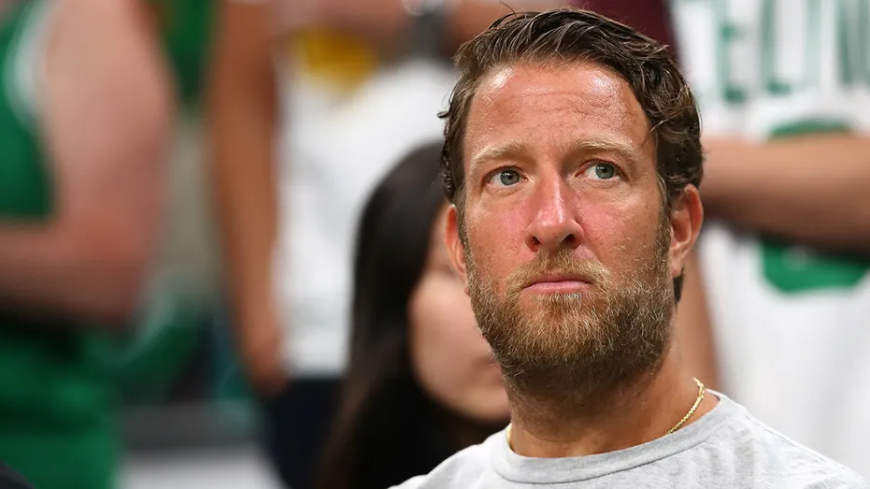Ohio State Denies Banning Barstool Sports Founder Dave Portnoy from Stadium Ahead of Michigan Game
Ohio State denies banning Barstool Sports founder Dave Portnoy from the Michigan game, sparking debates on media freedom and fan reactions.

In the latest twist to one of college football’s fiercest rivalries, Ohio State University has formally denied claims that Barstool Sports founder Dave Portnoy was banned from attending the Buckeyes’ highly anticipated clash against the Michigan Wolverines. The controversy erupted after Portnoy, a polarizing media figure with a massive online following, suggested he was blocked from stadium access, sparking a wave of fan speculation, criticism, and broader conversations about media freedom.
Timeline of Events
The story gained momentum earlier this week when Portnoy posted on social media that his credentials were allegedly denied for Saturday’s game at Ohio Stadium. The post quickly went viral, fueling narratives that the university had intentionally barred him.
According to a CNN Sports timeline, Portnoy initially suggested on Monday that his access request for the rivalry matchup had been “denied without explanation.” By Tuesday, speculation spread across sports forums, with fans questioning whether the decision was linked to his controversial reputation and outspoken commentary.
On Wednesday, Ohio State officials responded publicly, clarifying that no official ban had been placed on Portnoy. The university stated that credentialing decisions are typically handled by the Big Ten Conference and media partners, not directly by Ohio State administrators. The clarification came as a direct attempt to quash rumors that the school was targeting him personally.
By Thursday, Portnoy doubled down online, suggesting that institutional bias might be at play. His comments further inflamed debates across fan communities, while ESPN College Football reported the dispute as a developing media access controversy rather than a definitive ban.
Ohio State’s Official Stance
In a statement to national outlets, Ohio State emphasized that the university “does not issue permanent bans to individual journalists or media figures based on reputation.” Instead, they pointed out that large-scale events such as the Michigan rivalry involve multiple stakeholders, including security officials, broadcast partners, and the Big Ten itself.
An Ohio State spokesperson reiterated that media credentials are evaluated under standard guidelines. “Any suggestion that Mr. Portnoy was deliberately targeted by Ohio State is inaccurate,” the spokesperson said.
This statement has done little to calm the online storm, as fans continue to argue over whether Portnoy’s outspoken persona makes him a liability for traditional sports media coverage.
Fan Reactions: Divided but Vocal
Across social media platforms, the reaction has been swift and polarized. Portnoy’s loyal fan base, often referred to as the “Stoolies,” accused Ohio State and its partners of censorship and hypocrisy. Many argued that, regardless of his style, Portnoy has become a central figure in modern sports culture and deserves a place at the rivalry’s biggest stage.
Others, however, supported Ohio State’s handling of the situation. Critics pointed out Portnoy’s history of inflammatory remarks and controversies, arguing that universities and conferences have the right to limit media access for individuals who may disrupt the integrity of coverage.
The debate has spilled into sports talk radio and online forums, where users weigh the balance between press freedom and event security.
Media Freedom and Access in the Spotlight
This controversy has reignited a long-standing debate over how institutions manage media access in sports. Unlike traditional journalists, personalities like Portnoy represent a new breed of digital-first coverage that blends opinion, entertainment, and news.
Supporters of broader access argue that excluding voices like Portnoy undermines free expression and ignores the reality that millions of fans follow sports through non-traditional platforms. Detractors counter that granting media credentials is a privilege, not a right, and institutions must protect the event’s reputation from potential disruption.
Legal analysts note that public universities such as Ohio State are bound by First Amendment considerations, but credentialing decisions still allow leeway for organizers to determine who qualifies as media. The Portnoy case sits in the middle of this gray zone, underscoring the evolving tension between legacy outlets and digital disruptors.
The Bigger Picture: A Rivalry Beyond the Field
The Ohio State–Michigan game is already one of the most anticipated events in college sports, with playoff implications and decades of tradition on the line. The Portnoy saga has added a new subplot to the buildup, fueling even more attention around the rivalry.
For Ohio State, the priority remains ensuring a safe and well-organized event. For Portnoy, the incident has only amplified his brand, allowing him to frame himself as a maverick voice facing institutional pushback.
Whether he ultimately secures access or not, the dispute reflects broader questions about who controls sports narratives in the modern media landscape.
Conclusion
Ohio State’s denial of a ban against Dave Portnoy highlights the complexities of media access in today’s sports environment. What began as a rumor on social media has evolved into a national conversation about press freedom, institutional authority, and the changing face of sports journalism.
As kickoff approaches, one thing is certain: the rivalry between Ohio State and Michigan will not just play out on the field but also in the press box — and online, where voices like Portnoy continue to shape the narrative.














